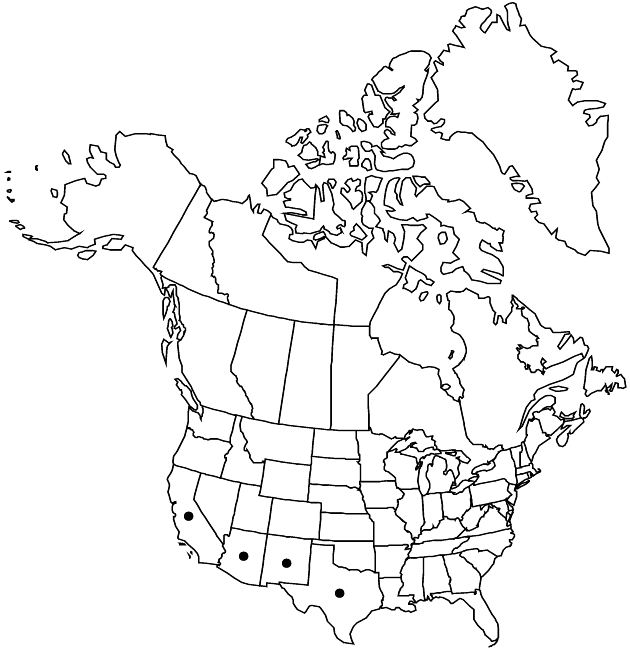Difference between revisions of "Ambrosia monogyra"
Madroño 49: 143. 2002.
imported>Volume Importer |
imported>Volume Importer |
||
| Line 52: | Line 52: | ||
|publication year=2002 | |publication year=2002 | ||
|special status= | |special status= | ||
| − | |source xml=https:// | + | |source xml=https://bitbucket.org/aafc-mbb/fna-data-curation/src/2e0870ddd59836b60bcf96646a41e87ea5a5943a/coarse_grained_fna_xml/V19-20-21/V21_4.xml |
|tribe=Asteraceae tribe Heliantheae | |tribe=Asteraceae tribe Heliantheae | ||
|subtribe=Asteraceae (tribe Heliantheae) subtribe Ambrosiinae | |subtribe=Asteraceae (tribe Heliantheae) subtribe Ambrosiinae | ||
Latest revision as of 20:12, 5 November 2020
Shrubs, 30–150(–400) cm. Stems erect. Leaves mostly alternate; petioles 0; blades mostly filiform, 5–30(–65+) × 0.5–1.5 mm, sometimes with 3(–5+) filiform lobes, abaxial faces glabrous or glabrate, often vernicose, adaxial faces densely scabrellous (white). Pistillate heads ± intermixed with staminates; florets 1. Staminate heads: peduncles 0–0.5 mm; involucres ± cup-shaped, 2–4 mm diam., ± glabrate, ± vernicose; florets 5–12+. Burs: bodies fusiform to pyriform, 4–5 mm, stipitate-glandular, wings 7–12+, mostly around middles, oblanceolate to cuneiform, 2–3 × 1–2 mm. 2n = 36.
Phenology: Flowering (May–)Aug–Nov.
Habitat: Desert washes, ravines
Elevation: 10–500 m
Distribution

Ariz., Calif., N.Mex., Tex., Mexico (Baja California, Baja California Sur, Chihuahua, Sinaloa, Sonora).
Discussion
Ambrosia monogyra may occur in western Nevada.
Selected References
None.